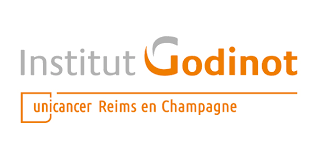Clinical spectrum and evolution of immune-checkpoint inhibitors toxicities over a decade—a worldwide perspective
Résumé
Background: Immune-checkpoint inhibitors (ICI) have revolutionized cancer treatment by harnessing the immune system but ICI can induce life-threatening immune-related adverse events (irAE) affecting every organ.
Methods: We extracted irAE from VigiBase, the international pharmacovigilance database, first reported in 2008 until 01/2023 to characterize irAE reporting trends, clinical features, risk factors and outcomes.
Findings: We distinguished 25 types of irAE (n = 50,347cases, single irAE/case in 84.9%). Cases mainly involved anti-PD1 (programmed-death-1) monotherapy (62.4%) in male (61.7%) aged 64.3 ± 12.6 years. After 2020 vs. prior to 2016, proportion of anti-CTLA4 (Cytotoxic-T-Lymphocyte-Antigen-4) monotherapy prescription almost vanished (1.6% vs. 47%, respectively) contrasting with increased use of anti-PDL1 (PD1-ligand) monotherapy (18% vs. 0.9%) and anti-CTLA4+anti-PD(L)1 combination (20% vs. 8.9%). Anti-LAG3 (Lymphocyte-Activation-Gene-3) prescription was limited (<1%) in the studied timeframe. After 2020, over 14 different cancer types were treated vs. almost exclusively melanoma and lung cancers before 2016. Overall, the most reported irAE were skin reactions (22.9%), pneumonitis (18.5%), enterocolitis (14.4%) and thyroiditis (12.1%). ICI-myotoxicities (6.6%) included myositis, myocarditis and myasthenia-gravis like syndrome and were the most overlapping irAE (up to 30% overlap, vs. <3% in general for other inter-irAE overlap). The top factors associated with specific irAE (odds-ratio>5) were presence of thymic cancer for ICI-myotoxicities or hepatitis; presence of melanoma for vitiligo, uveitis or sarcoidosis; specific types of ICI regimen (anti-LAG3 for meningitis, anti-CTLA4 for hypophysitis); and specific reporting regions (eastern Asia for cholangitis). Median time-to-onset ranged from 31 to 273 days, being shortest for myotoxicities and most delayed for skin-bullous auto-immune reactions. Overall fatality was highest for myocarditis = 27.6%, myasthenia = 23.1%, severe cutaneous adverse reactions (SCAR) = 22.1%, myositis = 21.9%, pneumonitis = 21%, and encephalomyelitis = 18%; generally decreasing after 2020, except for myasthenia and SCAR. When reported, irAE recurrence rate after rechallenge was 28.9% (n = 275/951).
Interpretation: This up-to-date comprehensive worldwide pharmacovigilance study defines the spectrum, characteristics, and evolution of irAE reporting summarizing over a decade of use. Multiple risk factors and clinical peculiarities for specific irAE have been identified as signals to guide clinical practice and future research.
| Origine | Fichiers éditeurs autorisés sur une archive ouverte |
|---|
